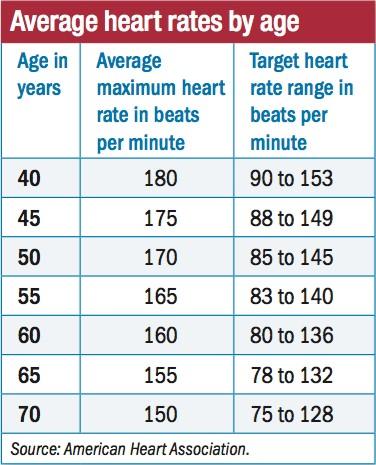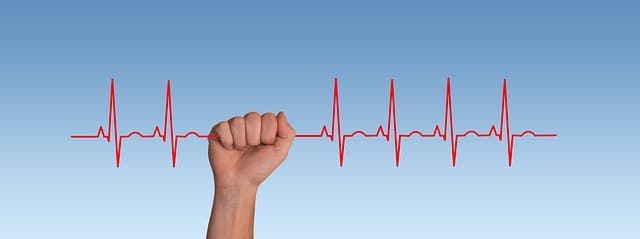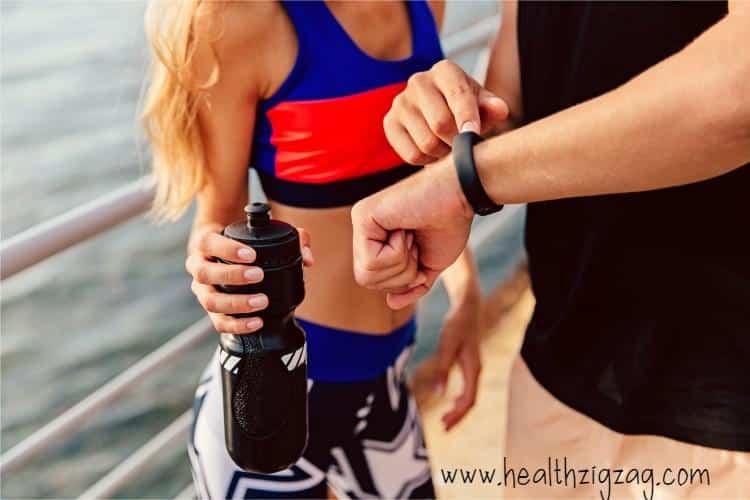
What is Heart Rate?
First thing first, before knowing all the reasons why we need to know what is it?. As stated by heart.org, heart rate is the number of times your heart beats per minute. It is known as pulse.
Every person has a different heart rate. Several factors influence heart rates such as age, activity levels, being a smoker, having a disease like cardiovascular, high cholesterol or diabetes. Even air temperature, body position, emotions, and body size also matter. It also matters if you are on medications or not.
There are 4 best places to find pulses from your body, it is from wrists, inside of the elbow, side of the neck, or top of the foot.
How Much Is A Normal Heart Rate?
A normal heart rate for adults is 60 to 100 beats per minute.
What your heart rate can tell you is, a lower heart rate means more efficient heart function and better cardiovascular fitness. Mayo Clinic states that a well-trained athlete might have a resting heart rate close to 40 beats per minute [1]. This is 20 beats lower than average normal adults.

A maximum heart rate in which your heart is beating and working its hardest to meet the body oxygen needs. It plays a major role to set aerobic capacity.
Heart Rate Disease
These are several heart-related diseases that might occur if you have an abnormal beating.
- Cardiac Arrest: happens when the heart malfunctions and stops beating unexpectedly. This is triggered by arrhythmia.
- Arrhythmia: is a disease that the heartbeat too fast, too slow or erratically. If the heartbeat too fast, or more than 100 beats per minute, it is called tachycardia. If the heart beats too slow, or less than 60 beats per minute it is called bradycardia. When the heart doesn’t beat properly, it can’t pump blood effectively. Which might result in damage to other organs or even a shutdown.
Why You Need To Monitor Your Heart Rate

- No matter what your occupation is, knowing a heart rate can help you manage your health condition, even notice your health problems. You don’t have to be an athlete, to have a heart rate monitor. Sometimes, a piece of knowledge about your heart rate can help you monitor your health level.
- You probably wonder why some people can run for an hour and barely seem out of breath, while you get completely breathless from a 10-minute warm-up. The answers lie in your heart. Your HRV levels at rest or during exercise can reveal your risk for heart attack and your fitness capacity.
- By monitoring your HRV, you can exercise safely and effectively. It can tell you when to speed up or slow down. It is more important if you are in a cardiovascular fitness assessment or a training program.
- For people who are on beta-blockers, or if you have an arrhythmia, it is important to monitor your heart rate. Don’t forget to record it using a journal, or log it on a health application. Some brands also can log it after you finish monitor your HRV.
Heart Rate Monitor Types:
- Chest Strap Devices is an HRV monitor that placed on your chest with a wireless sensor to detects your pulse electronically. Usually, it comes with a receiver, to display it.
- Wrist Based Devices: is an HRV monitor that placed on your wrist with an optical sensor to detects the pulse.
How To Find A Good Heart Rate Monitor (HRM)
If you are looking for a more accurate monitor, you should pick a chest-straps. But if you are looking for more convenient, it is better to use wrist-based devices.
Wrist-based devices or known as bands is good for casual use. They work only when you are still. This means you have to hold still. No talking, moving, muscle tensing, or sweating is allowed. These devices will give you a warning when you are too active for them to work.
If you are looking for medical use, it is better to use a chest strap monitor.
Another thing you need to consider is the features. Basic models time your workout and record your average, highest, or lowest heart rate data. Some brands offer a motion sensor that tracks steps and activity.

These are some features you can find on most advanced models:
- Target zones. The basic model offers up to 3 target zones such as endurance, aerobic, and anaerobic, while the advanced offer more than 3.
- Sport Watch. Offer features such as a clock, alarm, countdown, and calendar.
- Stopwatch and lap/split times. Offer split times after each lap at the track.
- Recovery heart rate mode. It can track the time it takes for your heart to return to normal after exercise.
- Time in the target zone. It can track the time you spend on exercise.
- Calorie counter. It can estimates how much calories are burned during exercise.
- Speed and distance monitor. It can calculate speed and distance in a particular workout. Using a GPS receiver or foot pod.
- Digital interface. It can connect to your computer or smartphone and offer training statistics.
- Can pairs with your smartphone and fitness apps.
- Fitness trainer. Can provide training alerts
- Coded transmitter. Can encrypt transmissions to the receiver from the strap.
- Sport-specific features. Can be customized for cyclist, or swimmer.
- Battery replacement. Can use rechargeable batteries for the maintenance.
Conclusion
Listening to your heart is super important because it can give you a glimpse of what your current health situation is. If you want to do that, you need to find a good HRV monitor for you.
Finding a good and accurate heart rate monitor might help you manage your health, plan your fitness activity, and notice your heart attack risk. To choose which monitor is good for you is based on what you need. Is it for medical use, fitness use, or casual use? You decide.
Note
To evaluate overall fitness, it is recommended to track your heart rate during exercise.
If you ever find an unusually high or low HRV, you might have to consult with your doctor, because it may indicate a problem.
Re-calibrate your heart rate monitor also help to maintain its accuracy, so just find a way to do it. Some brands can offer to re-calibrate it for you with a fee, some just offer you to download their mobile apps.




